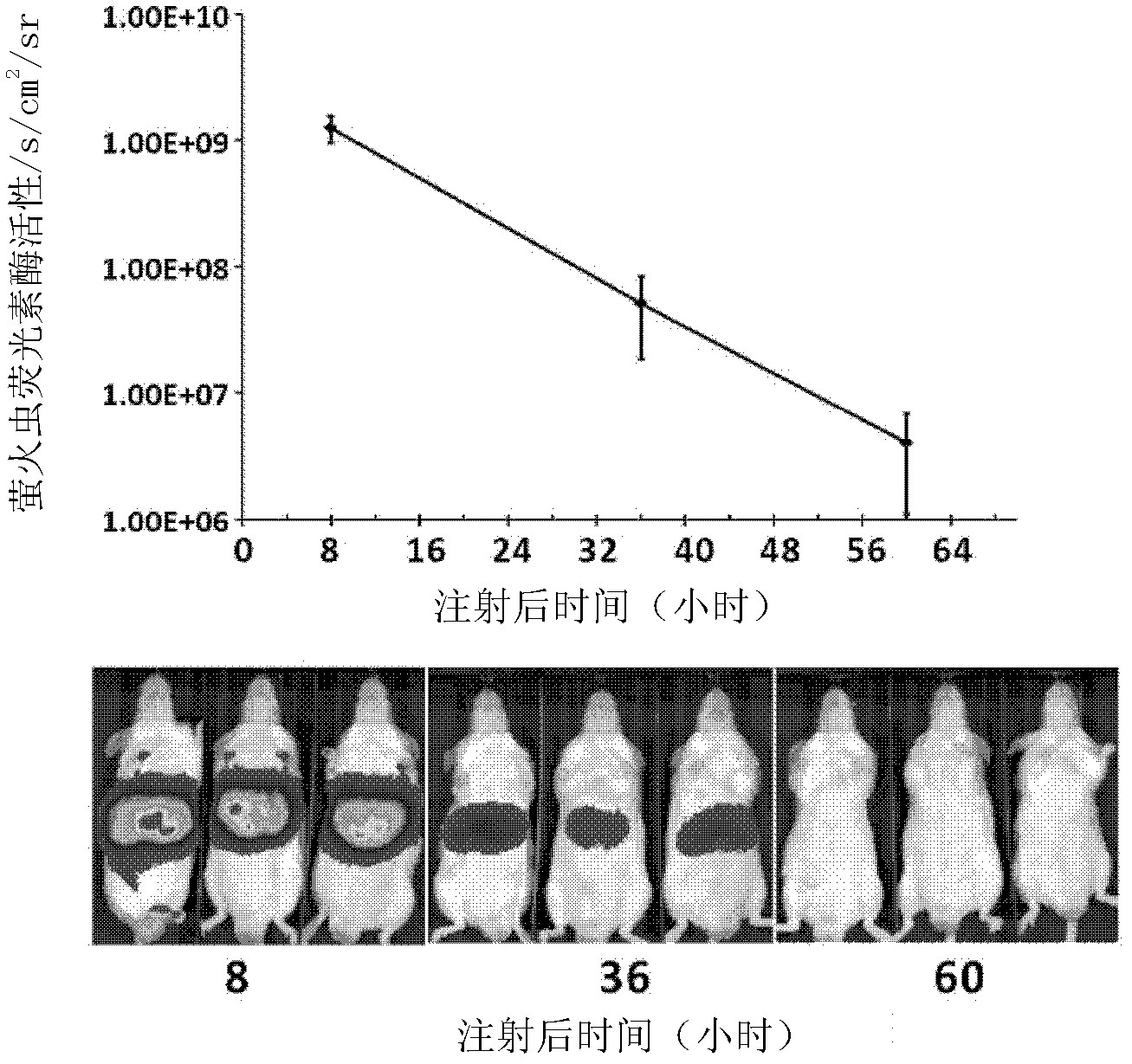Mouse model capable of monitoring activity of IFN-beta (interferon-beta) or NF-kappa B (nuclear factor-kappa B) in liver via living imaging and construction method for same
A mouse model and liver technology, applied in the field of biology, can solve the problems of less research on regulatory mechanisms, difficulties, lack of real-time, dynamic modeling, and convenient use of animal models
- Summary
- Abstract
- Description
- Claims
- Application Information
AI Technical Summary
Problems solved by technology
Method used
Image
Examples
Embodiment 1
[0035] Example 1. Construction of a mouse model capable of live imaging monitoring of IFN-β activity in the liver
[0036] Using the method of the present invention to construct a mouse model capable of live imaging monitoring of IFN-β activity in the liver, the specific method includes the following steps:
[0037] 1. Construction of recombinant vector pGL3-attB-IFNβ carrying phage integrase recognition site attB gene, IFN-β promoter and firefly luciferase (Fluc) reporter gene
[0038] Using the HepG2 cell genome as a template, the upstream primer IFNBpf:
[0039] AGATCTAATTCTCAGGTCGTTTGCTT and downstream primer IFNBpr:
[0040] Guided by AAGCTTAAAGGTTGCAGTTAGAATGT, utilize high-fidelity PrimeSTARTM HSDNA polymerase, PCR amplifies the IFN-beta promoter sequence of people (its nucleotide sequence is as shown in sequence 1 in the sequence listing), after the amplification finishes, carry out 1% agarose gel electrophoresis to the PCR amplification product, Recover and purify ...
Embodiment 2
[0071] Example 2, Evaluation of the activation of the IFN-β promoter using a mouse model that can monitor IFN-β activity with live imaging
[0072] In order to verify whether the mouse model of live imaging monitoring IFN-β activity in the liver constructed in Example 1 can be used to evaluate the activation of IFN-β in the mouse liver, a pathogen-associated molecular pattern in the signaling pathway produced by IFN-β was selected. poly(I:C) as an inducer. Add poly(I:C) to normal saline equivalent to 10% of the mouse body weight, and quickly inject (5-8sec) into the mouse body by hydrodynamic transfection method, and detect the expression of mouse liver luciferase and serum The level of IFN-β in the blood, specifically: 10 μg of poly(I:C) was sent to the liver of 3 mice (experimental group), and the small mice were monitored by live imaging at 4, 8, 12, 24, 48, and 60 hours. Fluorescence activity of mouse liver, and three control mice were hydrodynamically injected with norma...
Embodiment 3
[0075] Example 3. Evaluation of IFN-β Promoter Inhibition Using a Mouse Model That Can Live Imaging Monitor IFN-β Activity in the Liver
[0076] HCV NS3 / 4A protease is a known inhibitor of the IFN-β activation signaling pathway. Studies at the cellular level have demonstrated that HCV NS3 / 4A protease can block the IFN-β activation signal by cleaving MAVS in human cells conduction. The mouse model for monitoring IFN-β activity by in vivo imaging constructed in Example 1 was used to evaluate the inhibitory effect of HCV NS3 / 4A protease on IFN-β. Two groups of plasmids, pCI-neo (control group, purchased from Promega) and pCI-HCVNS3 / 4A (experimental group, constructed by inserting HCVNS3 / 4A into the pCI-neo vector), were transfected into Example 1 using a hydrodynamic method. Intravital imaging to monitor IFN-β activity in the liver of a mouse model, stimulate IFN-β activation with poly(I:C) 10 μg (or saline) 24 hours later, and monitor luciferase activity by intravital fluoresce...
PUM
 Login to View More
Login to View More Abstract
Description
Claims
Application Information
 Login to View More
Login to View More - R&D
- Intellectual Property
- Life Sciences
- Materials
- Tech Scout
- Unparalleled Data Quality
- Higher Quality Content
- 60% Fewer Hallucinations
Browse by: Latest US Patents, China's latest patents, Technical Efficacy Thesaurus, Application Domain, Technology Topic, Popular Technical Reports.
© 2025 PatSnap. All rights reserved.Legal|Privacy policy|Modern Slavery Act Transparency Statement|Sitemap|About US| Contact US: help@patsnap.com



